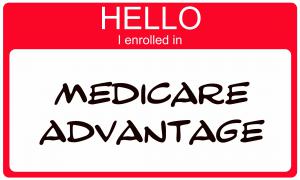Which Medicare Coverage is the Best?
Age old question which coverage Is better Medicare Advantage Vs Medigap
Remember Medicare is like a pair of shoes one size does not fit all.”
MELVILLE, NY, UNITED STATES, January 6, 2021 /EINPresswire.com/ -- Age old question which coverage Is better Medicare Advantage Vs Medigap.— Paul Barrett
Almost every day someone will ask me, some version of this question: Medicare Advantage vs Medigap – how do you choose? I’ve answered this same question thousands of times in my career.
As you may know by now, Medicare alone doesn’t cover everything. Most people buy additional insurance to bridge the gaps. When considering Medicare Advantage vs Medigap plans, it’s important to understand that both types of plans will help to reduce your out of pocket spending.
After all, who wants to come up with a $1400+ deductible each time you enter the hospital? Or shell out 20% of the cost of an expensive test like a MRI? So the two main types of coverage that you can buy to help with this are Medicare Advantage vs Medigap (Medicare Supplement). It’s important that you know how each type of coverage, so that you can select the right plan for you.
Though both policies help you cover your gaps in Medicare, they are designed very differently.
Medicare supplements pay as a secondary insurance to Medicare itself. This means they pay after Medicare first pays its portion of the bill. You stay enrolled in Original Medicare, and Medicare sends the remainder of your bills to your Medicare supplement company. Then the supplement company pays its share according to which plan you are enrolled in. Medicare Advantage plans, on the other hand, are entirely separate from Medicare. When you enroll into a Medicare Advantage policy, you get your benefits from the plan, not Medicare. You agree to use the plan’s network of providers except in emergencies. You’ll pay copays for your health care treatment as you go along.
Think of these plans as an alternative to Original Medicare. Let’s explore a bit more about each type of plan.
About Medicare Supplement(AKA)Medigap Plans
Medicare supplement plans are also called Medigap plans. Having a Medigap plan means you are still enrolled in Original Medicare as your primary insurance. You can see any provider that participates in Medicare, regardless of which supplement company you choose. You have access to all the Medicare providers nationwide – no referrals necessary. If you enroll in a comprehensive plan like Plan G, you will have very little out of pocket, Not even doctor copays!
Freedom of Access & No Referrals Necessary
Medicare supplements also offer you the most freedom of access to providers. You have freedom to choose your own doctors and hospitals from among the 900,000+ Medicare providers in the nation. No referrals are necessary to see a specialist on this type of coverage. Because these plans offer you the most freedom and flexibility, they have higher premiums than Medicare Advantage plans. In the New York area,for example, a female, non-tobacco user turning 65 might pay around $200 – $270/month for Plan G in 2020.
Rates in other states depend on which Medigap plan is chosen and whether that individual uses tobacco. Plans and rates also vary by region, age and sometimes gender.
Your Retail Drug Coverage is Separate
Medigap plans cover medications administered in a hospital setting, such as injectables or chemotherapy drugs. They do not cover retail medications though, so most beneficiaries will enroll in a separate Part D drug card. There are plans available in every state starting around $10/month up to $100.
About Medicare Advantage
About 36% of beneficiaries choose to enroll into Medicare Advantage policies, which are private insurance plans. They usually have lower premiums than Medigap plans….Many even a $0 premium on some plans in some areas. When a plan has a $0 premium, it means that you will pay no additional premiums for the plan itself. You will still pay for your Part B premiums monthly though. You must be enrolled in both Medicare Parts A and B to be eligible for a Medicare Advantage plan.
Check Your Doctors
Medicare advantage plans have networks which vary greatly in size, and choose a plan with a good network. Your Medicare Advantage insurance company will pay your healthcare bills instead of Medicare paying them. You will pay copays for the services you obtain from providers in the plan’s network as you go along. Generally the copays are reasonable, but you’ll want to review them before you enroll to make sure. 90% Medicare advantage plans cover Part D and many times will offer benefits that are not covered by original Medicare like dental, vision, hearing, free gym memberships and more.
There are many variables to consider when choosing a plan and there is no one best plan for all, so take your time and do your homework here are a few things to consider:
Monthly premiums Deductibles, if any
Expected costs of healthcare services on each plan
How often you use healthcare services
Areas where you will need access to care
Expected copays for your medications
Potential out of pocket spending for you on each plan type
Remember, you get what you pay for
Checking the provider networks and drug formularies for each plan can take many hours. You can simplify your search by having Paul Barrett Insurance licensed agents to do this for you. We’ve helped thousands of people like you with their options. We can search Medicare Advantage vs Medigap plans in your area.
We’ll be able to quickly tell you which plans your doctors take and whether your medications are covered. Working with an agent also gives you backend policy support and year round customer service if needed. Call 1-800-219-0453 for help today
Paul Barrett
Paul Barrett Insurance Services
+18883143339 ext.
email us here



